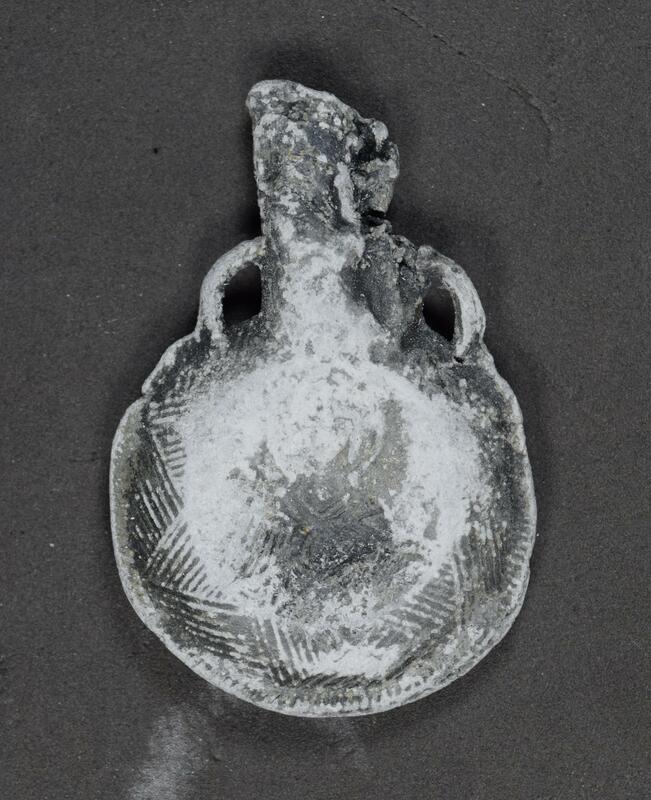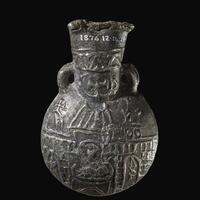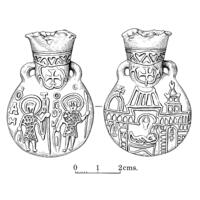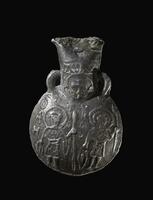St. Demetrios ampullae
Type:
Ampullae,
Pilgrim souvenirs
Date:
Twelfth to thirteenth century
Location or Findspot (Modern-Day Country):
Greece
Medium:
Lead
Description:
By the twelfth century, the myron (holy oil) associated with the body of St. Demetrios could be carried away from his church, Hagios Demetrios in Thessaloniki, in small lead ampullae. These ampullae were decorated on one side with St. Demetrios and on the other with the Virgin; St. Nestor (martyred with Demetrios); St. Theodora, the wonder-working nun whose tomb in Thessaloniki also exuded myron; or other saints. Pilgrims could select the iconography most meaningful to them. All of the ampullae were cast in two pieces in stone molds, probably by a single urban workshop.
This has parallels in Acre, which produced generic Holy Land ampullae, decorated with crosses or geometric motifs, for pilgrims who could not visit Christian sites in Muslim hands (Acre was the last crusader holdout, lasting until 1291), and in Venice, which made glass tokens with images associated with Christian sites from Santiago to Bethlehem. This commercialization meant that one could acquire a religious souvenir without actually visiting the sacred source—in contrast with the earlier tokens from Qal'at Sem'an, which acquired their sacred charge from their physical proximity to the column of St. Symeon.
This has parallels in Acre, which produced generic Holy Land ampullae, decorated with crosses or geometric motifs, for pilgrims who could not visit Christian sites in Muslim hands (Acre was the last crusader holdout, lasting until 1291), and in Venice, which made glass tokens with images associated with Christian sites from Santiago to Bethlehem. This commercialization meant that one could acquire a religious souvenir without actually visiting the sacred source—in contrast with the earlier tokens from Qal'at Sem'an, which acquired their sacred charge from their physical proximity to the column of St. Symeon.
Relevant Textbook Chapter(s):
8
Repository and Online Resources:
• See a similar ampulla from the Benaki Museum of Greek Culture, Athens.
• Read about a Demetrios ampulla embedded in the frame of a fourteenth-century micromosaic, now in the Museo Civico in Sassoferrato.
• Learn more about pilgrimage souvenirs on the Smarthistory website.
Image Credits:
© Trustees of the British Museum




